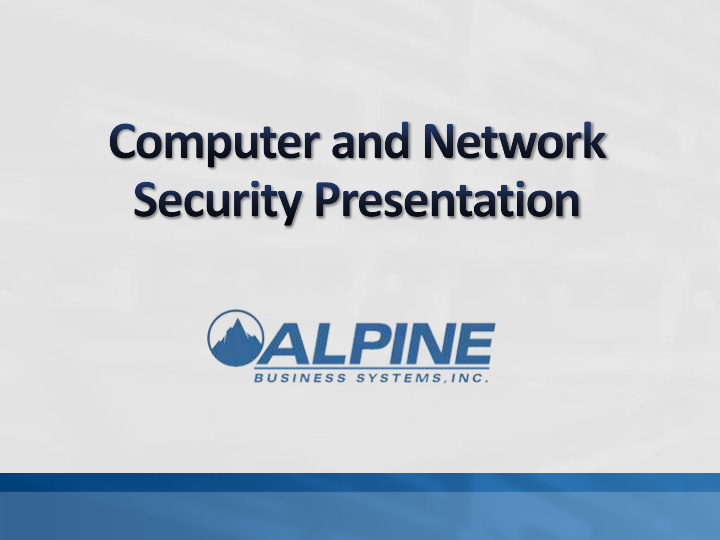



2007 – Self morphing viruses 2009 - The Zeus virus – “Man in the browser” attacks – no browser is safe 2011 – 300% increase in cyber –attacks
Who they are Why they do it Who are the targets
Our filter processes 3 billion emails/day and 98% are SPAM Easy to create, spoof addresses (impersonate someone else) Designed to decrease productivity, spread malware Used by the spammers as a way to communicate Hundreds of attempts foiled every week Designed to steal information Multiple methods of infection – emails, web sites, music sharing sites
Thousands caught in our filter every day Designed to destroy or manipulate data, computers, networks Multiple methods of infection – emails, web sites, music sharing sites
1 in 8 web pages are infected (Google statistic) Be very suspicious Always look for the name right before .com or .org in the URL
Web Searches, E-mails or IM’s impersonating a trusted entity Directs you to a phony web site, then look out!
Facebook, Twitter, Google+, Pinterest, thousands of them The good, the bad, and the ugly Once it is on the Internet – it never goes away!
Wall Street Journal – more than 50% take your personal info Why Apple does not allow Java, Flash, etc.
Great technology if they are secured; Hacker’s paradise if not Do not broadcast the SSID Use encryption: WPA- PSK or stronger
“The act of manipulating people into performing actions or divulging confidential information.” – Wikipedia The latest and often the most effective tool Some scenarios – the help desk, the acquaintance, the researcher
Lock your computer: CTRL-ALT- DEL – Lock Computer Logoff your computer: Start – Shutdown - Logoff Do not leave passwords written next to computer USB Flash Drives – Cell Phones – Smart Phones Notebook computers – one of the largest data theft targets
Change your password regularly – CTRL-ALT-DEL – Change Password Minimum 6 characters; 3 of these: Upper, Lower, Numbers, Symbols Don’t give it to anyone – no matter what they say! Never e-mail work products to your personal e- mail account Meta-data- What it is, what is the risk
Always use latest Anti-virus (ESET NOD32, Symantec, MacAfee, TrendMicro, Panda) Keep PC’s updated with Service Packs, Patches, Upgrades Never plug directly into Cable/DSL/FiOS modem Always use a router (Linksys, Netgear, D-Link) Use Network Address Translation and DHCP (standard defaults)
Never use your work computer for personal use Never divulge any information to anyone you don’t know Always convert to PDF Change your password regularly to a strong one (see Logical Security) Stop using “free” music/video sharing sites Lock or logoff your computer Report anything that is suspicious See advice above - Wireless and Home Networks Download and configure Trusteer Rapport, the anti-key-logger from www.trusteer.com
Recommend
More recommend